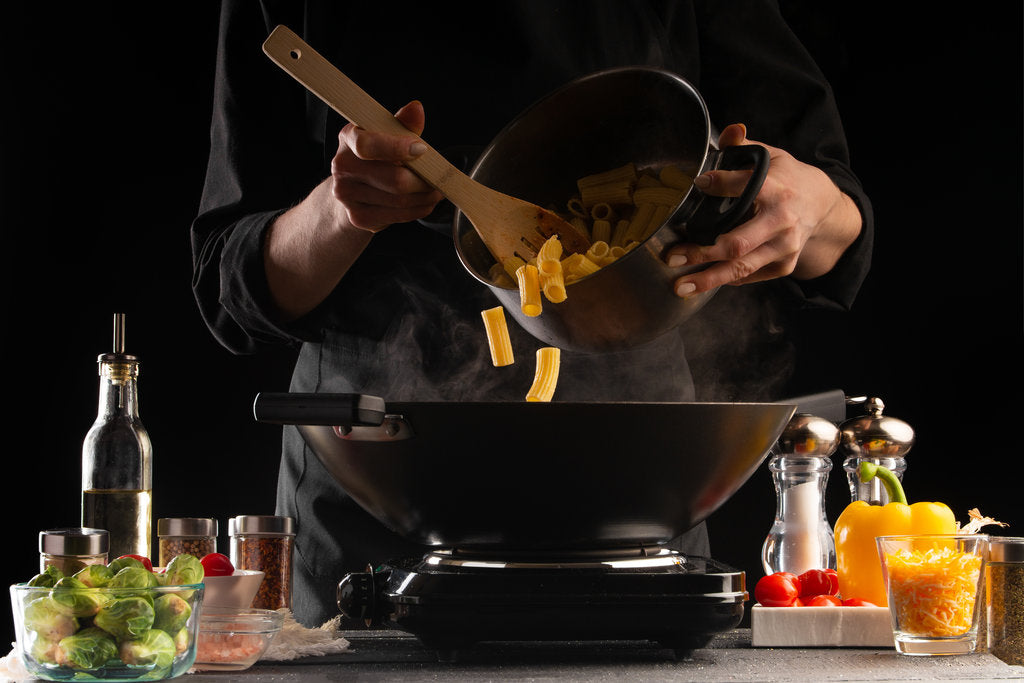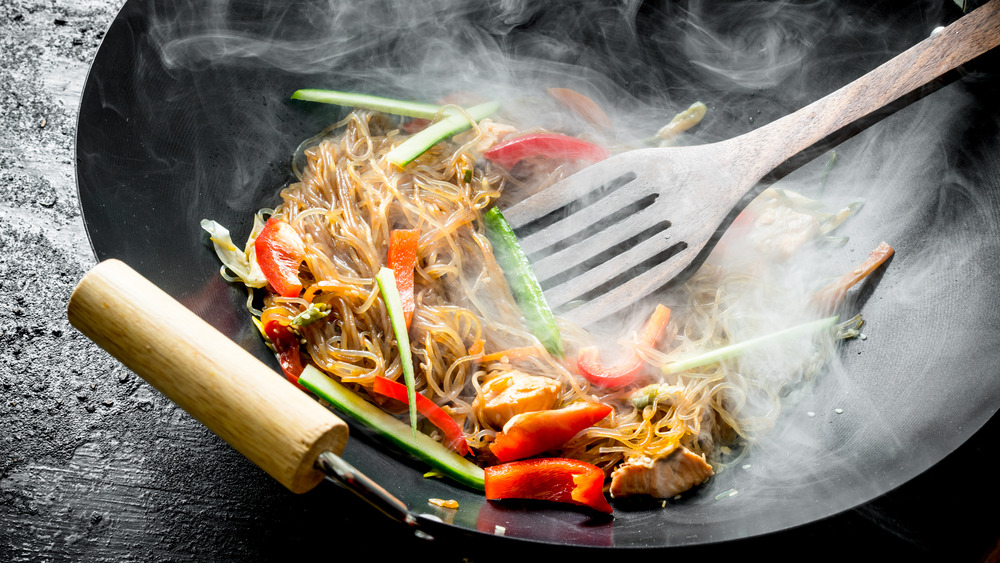A wok is a versatile cooking pan that anyone can use to make delicious meals. Its here to help bring a wide variety of dishes to your table with ease. Whether you are a seasoned chef or a culinary beginner, learning how to use a wok can be a tremendous boost to your kitchen skills, allowing you to prepare delightful meals for you and your loved ones.
In this article, we’ll explore the ins and outs of using a wok, offering approved and terrific techniques to enhance your cooking experience. Learn the secrets of wok cooking and discover why it is a favorite tool among professional and home cooks alike.

Understanding the Wok
What is a Wok?
The wok is a deep, round-bottomed cooking pan originating from China. Over time, it has become popular in kitchens worldwide due to its versatility in all types of cooking including frying, steaming, and more. Knowing how to use a wok opens up a wide array of culinary possibilities, making it a delight to use in the kitchen.
Different Types of Woks
There are various wok types available, each suited for different cooking needs. Some common materials are stainless steel, cast iron, and carbon steel. It’s important to choose the right one for your kitchen to maximize cooking results.
Why Use a Wok?
Benefits of Cooking with a Wok
Using a wok allows for even heat distribution and fast cooking times. The design minimizes the amount of oil necessary for cooking, making meals healthier. Additionally, the shape of the wok makes it easy to toss ingredients, ensuring an even mix without much effort.
Popular Wok Recipes
Many delicious recipes can be prepared using a wok, ranging from stir-fry dishes, such as chicken and broccoli, to more sophisticated sauces and soups.
Steps: How to Use Wok Effectively
Choosing the Right Wok for You
Consider the size and material of the wok when purchasing. A 12-14 inch wok is typically suitable for most families and is ideal for both stir-frying and steaming food.
Preparation: Seasoning Your Wok
Before you begin, ensure that your wok is properly seasoned. This involves coating the inside surface with a thin layer of oil and heating it to create a non-stick seal.
The Perfect Stir-Fry
After preparing the wok, heat it to a high temperature before adding oil. Use fresh ingredients and cook them in batches to prevent overcrowding. This technique helps preserve the vibrancy and texture of vegetables.
Utensils for Wok Cooking
Use a wooden spatula or a slotted spoon for stirring and tossing ingredients. These utensils won’t scratch the surface of the wok, ensuring its longevity.
Caring for Your Wok
Cleaning Your Wok
Proper cleaning is essential for maintaining your wok. After use, clean it with hot water and a soft sponge to avoid damaging the seasoned surface. Dry it completely before storing.
Storing Your Wok
Store your wok in a dry place to prevent rusting. Consider hanging it up by its handle to keep it in the best condition.
Troubleshooting Common Issues
Dealing with Sticking Food
If food is sticking to the wok, ensure it’s properly seasoned. Use more oil or adjust the cooking temperature as necessary.
Managing Hot Spots
If your wok has hot spots, it’s likely your stovetop isn’t distributing heat evenly. Stir the food frequently or cook over a smaller flame to balance the heat.

FAQs
Can I Use a Wok on an Electric Stove?
Yes, a flat-bottomed wok or a wok ring can be used on electric stoves. The flat surface ensures even heat distribution.
Why is My Wok Rusting?
Rust can occur if a wok is not properly seasoned or stored wet. Ensure it is dry and protected after each use.
What can I Cook in a Wok?
Nearly anything! From stir-fries to steaming, a wok can handle a wide range of culinary tasks.
You can also explore more on wok cooking at Wok Guide.
For more tips on cast iron care, see Cure Cast Iron.
As an Amazon Associate, I earn from qualifying purchases.
